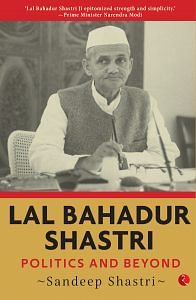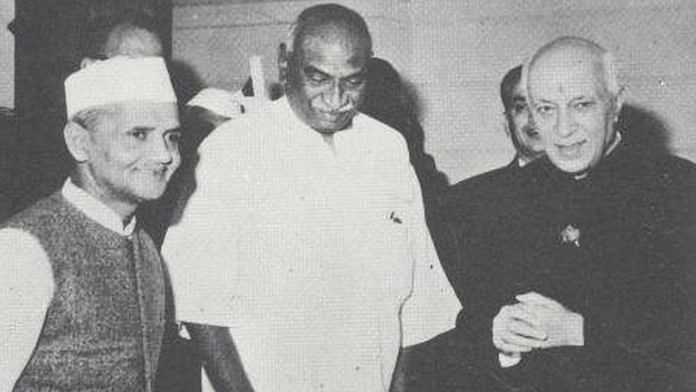In the August of 1956, there was a major railway accident in Mahbubnagar, Andhra Pradesh, killing as many as 112 people. Taking moral responsibility for the accident, Shastri tendered his resignation to the PM, but Nehru persuaded Shastri to withdraw his resignation. A few months later in November 1956, there was yet another railway accident in Ariyalur in Tamil Nadu. This tragedy resulted in 144 deaths. Shastri promptly submitted his resignation to the PM and pleaded for its early acceptance.
This second resignation offered by Shastri attracted nation-wide attention. The Pioneer in its editorial on 26 November 1956, soon after the Ariyalur accident, said that ‘accidents happen in the best regulated railways, but then accidents ought to be exceptions rather than the rule.’ While making out a case for greater safety measures, it did not hold the railway minister responsible in any way. In his resignation letter, Shastri felt that ‘it will be good for me and the Government as a whole, if I quietly quit the office I hold.’ It may be important to underscore the use of the word ‘quietly’ by Shastri, as this appeared to be his second nature.
Nehru summed up the dilemma he faced when he conceded in the Lok Sabha that it was a difficult decision for him. He went on to say that he had the highest regard for Shastri and ‘from the broader point of view of constitutional propriety that we should set an example in this and no man should think that whatever might happen, we carry on without being affected by it.’ Nehru hinted that if he did accept the resignation, it would be on the grounds of constitutional propriety. This needs to be highlighted, as justifying the acceptance of the resignation on this principle became the object of severe criticism in the media.
Also read: Ambassador not Cadillac: How Lal Bahadur Shastri defied Nehru’s tradition
The resignation that set the gold standard
When it appeared that Nehru seemed inclined to accept the resignation, thirty MPs appealed to Nehru not to let Shastri go. They were of the view that while Shastri should be lauded for having offered to resign, his resignation should not be accepted, as he was not personally responsible for the accident. The mishap was on account of technical failure for which the railways board should take responsibility. The parliamentarians were clear that the bureaucracy should take the blame and not the political executive.
However, Shastri did have his way and Nehru forwarded the resignation to the president for acceptance. Speaking in the Lok Sabha on the matter, Nehru elaborated:
On receipt of this letter, I talked to him also last night when I saw the great distress of his mind and the burden he was carrying. Afterwards I thought of it again and I came to the conclusion that it would be better for me [to advise]… the President to accept his resignation, not because I hold the Railway Minister responsible— obviously not—and I have also spoken in high terms of his work and joint work we have done together… no man can wish for a better colleague in any undertaking… A man of the highest integrity, loyalty, devoted to the ideal, a man of conscience and a man of hard work. We can expect no better. It is because he is such a man of conscience that he [feels] deeply whenever there is any failing in the responsibility entrusted to his charge.
Also read: A political dynasty that no one talks about, but it spans three generations & four parties
In this speech, Nehru makes no reference to constitutional propriety. He hailed Shastri as a valued colleague and a man of conscience, integrity and total loyalty. The ‘constitutional propriety’ reference he made in his first intervention on the issues was the focus of the media. The Pioneer came down heavily on the PM for having accepted Shastri’s resignation. In its editorial of 28 November 1956, while making a distinction between self-immolation and hara-kiri in strong words, it stated that Nehru’s conduct in making a martyr out of an ‘exceptionally conscientious and hardworking colleague [was] wholly unwarranted’. The editorial further said it did not see any point in first making someone a superman and then throwing him out, citing some non-existent ‘constitutional propriety’. The editorial also argued that, in reality, one needs to focus on what is ‘feasible’ rather than ‘desirable’.
Yet, over the years, Shastri’s decision to quit, owning moral responsibility for the train disaster, has been frequently quoted to remind ministers of their ethical obligations. Very few have followed Shastri’s example, and even when they have, it has been more of a mask to cover blatantly personal or political goals.
By his actions, Shastri seemed to have set a high benchmark. It may not have been followed by others, but it became an important barometer to measure Shastri’s own political credentials and credibility. The fact that even six decades after the incident, it is regarded as the gold standard on/for ethical norms and probity goes to indicate how the decision to resign is assessed. Beyond doubt, it placed Shastri on a pedestal.
 This excerpt from Lal Bahadur Shastri by Sandeep Shastri has been published with permission from Rupa Publications.
This excerpt from Lal Bahadur Shastri by Sandeep Shastri has been published with permission from Rupa Publications.



